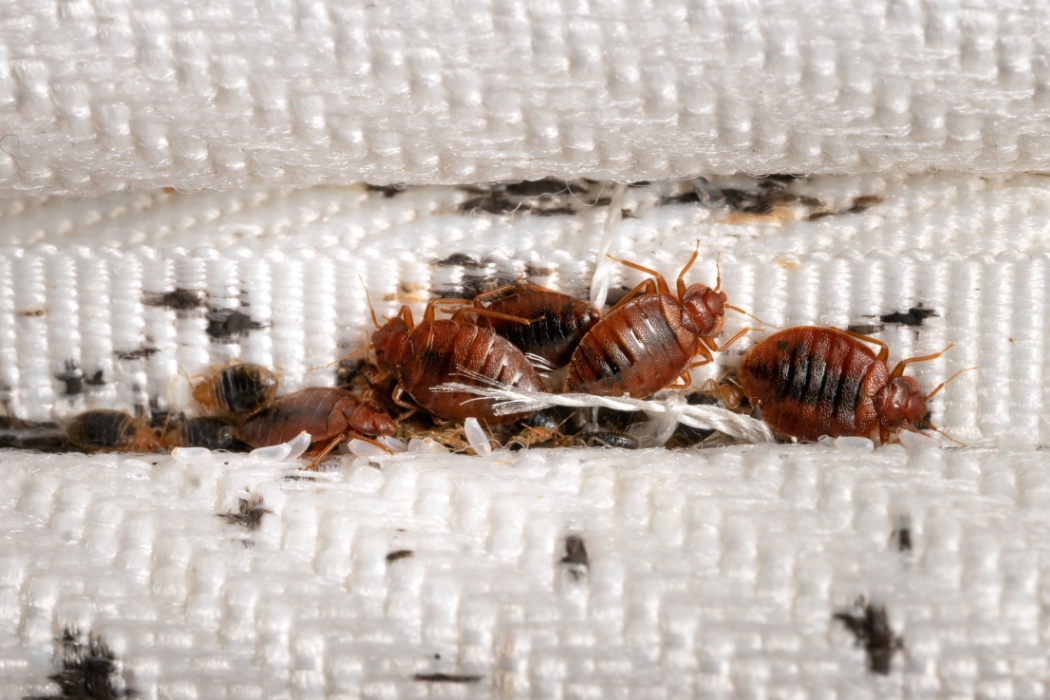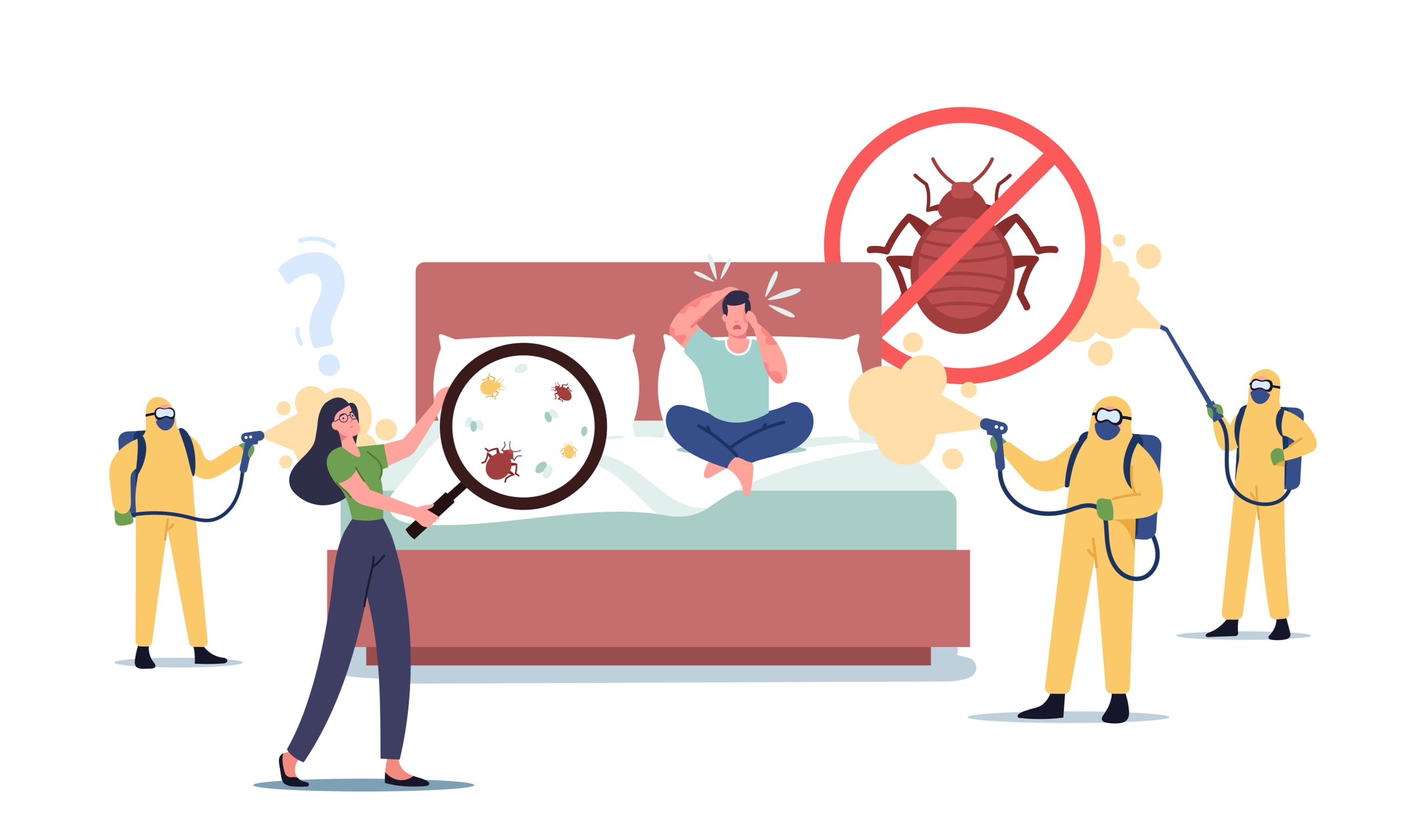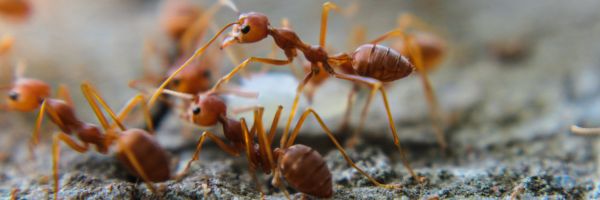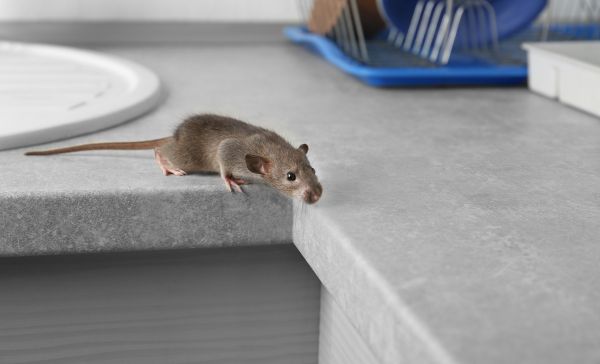Table of Contents
Quality Service Guarantee Or Painting Free

Get a rental agreement with doorstep delivery

Find the BEST deals and get unbelievable DISCOUNTS directly from builders!

5-Star rated painters, premium paints and services at the BEST PRICES!
Loved what you read? Share it with others!


Submit the Form to Unlock the Best Deals Today
Check Your Eligibility Instantly

Experience The NoBrokerHood Difference!
Set up a demo for the entire community

Tenant Super Relax Plan
Enjoy Hassle-Free Renting
 Full RM + FRM support
Full RM + FRM support Instant alerts & premium filters
Instant alerts & premium filters Rent negotiation & relocation help
Rent negotiation & relocation helpHow to Get Rid of Bed Bugs: Best Tips and Natural Methods for a Pest-Free Home in 2025
Table of Contents
When faced with the challenge of how to get rid of bed bugs, the old adage "sleep tight and don't let the bedbugs bite" becomes a daunting reality. Imagine the discomfort of finding these nuisances in your bed, especially after a long, exhausting day. This discovery turns your quest for a peaceful night's sleep into an urgent search for solutions to eradicate these unwelcome intruders.
Bed bugs, tiny oval insects about 5mm in size, feed on human or animal blood. They reproduce quickly, making their dust-like eggs difficult to eliminate. These pests, unable to fly, are adept crawlers on walls and ceilings. Young bed bugs, called nymphs, require five moults and a month of feeding on blood to mature. Historically, even ancient Egyptians faced them, and pesticides have been used for control. Today, for effective removal, especially from small items, it's recommended to consult pest control experts, although some home remedies may help.
How to Identify Bed Bugs in Home
One of the most crucial steps in the bed bug control process is identifying their presence before they wreak complete havoc in your home. Once they reach the stage of infestation, it is almost impossible to get rid of them. Scientifically known as Cimex lectularius Linnaeus, bed bugs could be slightly brownish or reddish in shade.
Quality Service Guarantee Or Painting Free

Get a rental agreement with doorstep delivery

Find the BEST deals and get unbelievable DISCOUNTS directly from builders!

5-Star rated painters, premium paints and services at the BEST PRICES!
Female bed bugs lay about 1 to 5 eggs per day. These insects commonly attack you at night because they look for warm-blooded hosts that exhale carbon dioxide. Upon finding a suitable body, bed bugs attack the host with two tubes. Once the need for blood is satiated, they disappear for 5 to 10 days to digest, rest and reproduce.
If you notice red welts on your body, the first step is to confirm the presence of bed bugs. Bed bugs are often found in the 8-foot area where the host sleeps. Check the mattress underlining and piping properly, and look for tiny red insects that might be crawling. You could also find spots of their faecal matter.
Common areas to check -
- Bed frame
- The head and footboard of the bed
- Other furniture items
- Walls and corners
- Carpets
- Electronic devices with hidden spaces
Once you have confirmed the presence of bed bugs, it is most likely an infestation, and you should check other rooms as well. You can also use insecticides to force them out of their hiding locations. After assessing the level of damage, you can plan how to get rid of bed bugs in a mattress.
Keep the Infestation from Spreading: How To Get Rid of Bed Bugs Permanently?
As an answer to the question - how to get rid of bed bugs permanently, calling an exterminator might be your best bet at this stage. They can use suitable pesticides and get control of the situation before it gets too bad. Using chemicals yourself without any expert guidance can be harmful as the chances of toxic residue on bedding increase.
Pest exterminators will examine the severity of the damage and then work according to the best-suited plan. They are authorised to use chemicals unavailable to the general public and can ensure no harmful side effects or consequences.
How to Get Rid of Bed Bugs Permanently: A Multi-Step Approach
Eliminating bed bugs requires a comprehensive, systematic approach that combines multiple treatment methods. Success depends on early detection, thorough preparation, and consistent follow-through with each step. This guide outlines the essential actions needed to eradicate these persistent pests from your home.
Step 1: Identify and Inspect: Carefully examine all potential hiding spots, including mattress seams, bed frames, headboards, and nearby furniture. Use a flashlight and magnifying glass to look for live bugs, dark spots (droppings), eggs, and shed skins. Document infested areas to track treatment progress.
Step 2- Contain the Infestation: Immediately seal infested items in heavy-duty plastic bags. Place bed bug-proof encasements on mattresses and box springs. Remove clutter around beds and furniture to reduce hiding spots. Keep infested rooms isolated to prevent bugs from spreading to other areas.
Step 3- Clean and Organize: Thoroughly vacuum all surfaces, including carpets, mattresses, and furniture. Use vacuum attachments to reach crevices and seams. Seal and dispose of vacuum bags immediately. Wash and dry all fabrics on high heat, including bedding, curtains, and clothing.
Step 4- Apply Treatment Methods: Use a combination of EPA-registered pesticides, diatomaceous earth, and steam treatments on infested areas. Focus on cracks, crevices, and furniture joints. Apply treatments systematically, working from the outer edges of rooms toward the centre to prevent bugs from escaping.
Step 5- Monitor and Follow Up: Place bed bug interceptors under furniture legs to catch and monitor activity. Continue inspecting regularly for at least two months after treatment. Keep detailed records of any new signs of activity. Retreat areas if necessary, adjusting methods based on results.
Step 6- Prevent Future Infestations: Regularly inspect beds and furniture, especially after travelling. Use protective covers on mattresses and box springs. Be cautious when bringing second-hand furniture into your home. Educate household members about prevention strategies and early warning signs.
Non-chemical and chemical treatments: How to get rid of bed bugs fast at home?
Even though most cases might require professional intervention, you can still salvage the situation with home remedies for bed bugs if signs of infestation are noticed from the very start. Try cleaning your room and ensure no hiding spots in the corners. Check your bedsheets and garments for signs of blood or faecal matter left over by bed bugs. Some of the common remedies on how to get rid of bed bugs are -
1. Mattress Encasement:
One of the best ways of bed bug pest control is mattress encasement, which involves covering your bedding with a specific fabric that effectively traps bed bugs and prevents them from reaching the outside layer. This is the best way to get rid of bed bugs from new mattresses, as they stay free of any kind of infestation.
3. Bed Vacuum:
If you are wondering how to get rid of bed bugs in a mattress, another popular method is to use ziplock bags, which create a vacuum-like atmosphere. Take some bags and put them over your mattress, sealing the end corners effectively. Abandon the room for 7 to 10 days. This will stop the entry and exit of any bed bugs and eventually lead to their starvation.
4. Heat:
Unlike some insects, bed bugs cannot survive in relatively high room temperatures. 45 C or 113 F is the temperature when bed bugs start to die. 60 C or 140 F is the ideal temperature for killing them rapidly. You can try raising the temperature in the room or steaming your mattress for heat treatment. However, you need to be careful with this procedure as it might be ineffective if some parts of the mattress end up remaining cold. Professionals can ensure the efficiency of heat treatment by strategically placing fans to distribute heat evenly.
5. Insecticide Dust:
Even though self-administering insecticides in your home is professionally discouraged, you can still get on some non-toxic dust for bed bug control, for example – silica dust. Silica causes erosion of the outer skull of bed bugs, which results in their dehydration. You can use this dust on inaccessible areas like the tufts and corners of bed frames, the box spring's interior portion or the furniture edges. Silica dust might cause some irritations in your body, so you should sleep away from the affected area.
6. Borax:
Scattering a dash of borax powder on your uncovered mattress, cracks in furniture, or wall edges and corners can help you slow down the infestation. You can also fill a spray bottle with water and add borax to it. Sprinkling the solution on your mattress will cause the bed bugs to suffocate and eventually die. Washing all your clothes and bedding in hot water and borax is also an excellent remedy to eliminate any residues.
7. Rubbing Alcohol:
Rubbing alcohol helps kill the insects by dissolving their cells away. When bed bugs come in contact with rubbing alcohol, their skin dries up, thus causing them to die. However, studies have indicated that this procedure is effective only 50% of the time due to increased activity during the night hour. Rubbing alcohol can also cause fire hazard due to its explosive properties. You are always advised to go for a patch test beforehand.
8. Diatomaceous Earth:
Diatomaceous earth proves highly effective in naturally and safely eliminating bed bugs. Apply it in wall crevices and between mattresses or furniture. This substance removes the bugs' protective oily coating, leading to dehydration and death. Although this method is gradual, it's potent over time, mainly when used alongside other treatments. Remember to wear a mask during application to prevent inhaling fine particles.
Top Home Remedies for Bed Bugs
While professional treatment is often the most effective solution, several home remedies can help control and reduce bed bug populations. These natural methods can be used alongside conventional treatments or as a first response while preparing for professional intervention.
1. Steam Treatment
Use a high-quality steam cleaner (reaching at least 130°F) on mattresses, furniture, and carpets. Move the steamer slowly to ensure heat penetrates all surfaces. Pay special attention to seams, tufts, and crevices where bugs hide.
2. Essential Oils Spray
Combine tea tree, lavender, and peppermint oils with water in a spray bottle. Apply to infected areas and potential hiding spots. While not a complete solution, these oils can help repel bed bugs and may kill some on contact.
3. Baking Soda Application
Sprinkle baking soda around infested areas and leave it for several days. The abrasive nature of baking soda can damage bed bugs' exoskeletons, while its moisture-absorbing properties can help dehydrate them. Vacuum thoroughly after treatment.
4. Hot and Cold Treatments
Place infested items in sealed plastic bags. Either expose them to high heat (over 120°F) for several hours or freeze them (below 0°F) for at least four days. This method works well for smaller items and clothing.
5. Rubbing Alcohol Solution
Create a solution of rubbing alcohol and water in a spray bottle. Apply to visible bugs and suspected hiding spots. While alcohol can kill bed bugs on contact, use caution as it's flammable and may damage some surfaces.
6. Bean Leaves Trap
Scatter kidney bean leaves around infested areas overnight. The microscopic hairs on these leaves can trap bed bugs. Collect and dispose of the leaves in sealed plastic bags each morning. This is an old but effective folk remedy.
Proactive Measures to Prevent Future Bed Bug Infestations
To ensure your home remains free from bed bugs in the future, it's crucial to adopt proactive measures. Here are some key strategies:
- Regular Inspection: Check areas where bed bugs are likely to hide, such as mattress seams, bed frames, and furniture crevices. Use a flashlight for better visibility.
- Maintain Cleanliness: Vacuum your home regularly, especially in bedrooms and living areas. Dispose of the vacuum bag immediately after use to prevent any captured bed bugs from escaping.
- Clutter Reduction: To reduce hiding spots for bed bugs, minimize clutter around your home. Organize and store items neatly, particularly under beds and in closets.
- Mattress and Box Spring Encasements: Use protective covers for your mattress and box spring. These encasements can trap bed bugs inside, preventing them from feeding and reproducing.
- Hot Washing and Drying: Bed linens, curtains, and clothing should be washed in hot water and dried on the highest dryer setting. Heat is an effective method to kill bed bugs.
- Travel Precautions: Be vigilant when travelling. Inspect hotel rooms, especially beds and furniture, for signs of bed bugs. Keep your luggage off the floor and use luggage racks.
- Seal Cracks and Openings: Seal any cracks in walls, baseboards, and around electrical outlets to block entry points for bed bugs into your home.
- Professional Inspections: Consider scheduling regular inspections by pest control professionals, especially if you live in an apartment complex or a bed bug-prone area.
Integrating these practices into your routine can significantly reduce the risk of a bed bug infestation and maintain a comfortable, bug-free home. Remember, prevention is always better than cure for bed bugs.
Bed bugs, tiny oval pests in brown or red, have troubled humans since ancient times. Identifying them is tricky; they hide daily and feed on blood at night. Signs of their presence include bite marks or blood stains. While home remedies offer some relief, modern chemical treatments are more effective. For a comprehensive solution in India, consider booking a professional exterminator through NoBroker's website or app, ensuring efficient and thorough eradication.
Frequently Asked Questions
Ans: Different permanent solutions for bed bugs have different timespans. Professional exterminators usually set up two appointments at a two-week gap.
Ans: Diatomaceous earth can take from a week to 17 days to work against bed bugs.
Ans: Usually, the bed bug bite is not considered a severe threat. Some people might not even notice any marks. However, some people might have allergic reactions that require medical attention.
Ans: No, just like high temperatures, bed bugs do not survive in a frigid environment as well. Any temperature below -18 C or 0 F for more than 4 days consecutively can kill bed bugs; hence, it’s considered a permanent solution.
Ans: No, bug bombs are considered ineffective to permanently get rid of bed bugs as they cannot reach hidden areas.
Loved what you read? Share it with others!
Most Viewed Articles

10 Best Home Remedies to Get Rid of Cockroaches Instantly and Naturally
May 17, 2025
105119+ views

How to Get Rid of Lizards at Home Without Killing Them?
January 31, 2025
47480+ views

How to Get Rid of Bed Bugs: Best Tips and Natural Methods for a Pest-Free Home in 2025
January 31, 2025
23094+ views

Here’s How to Get Rid of Ants Permanently in Your House
January 31, 2025
22934+ views

Proven Tips and Tricks on How to Get Rid of Small or Big Rats at Home
January 31, 2025
22283+ views
Recent blogs in
How to Get Rid of Flying Cockroaches: Simple and Effective Methods for 2025
April 28, 2025 by Ananth
Here’s How to Get Rid of Ants Permanently in Your House
January 31, 2025 by Susan
How to Get Rid of Lizards at Home Without Killing Them?
January 31, 2025 by Susan




Join the conversation!